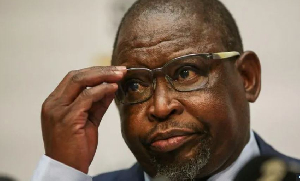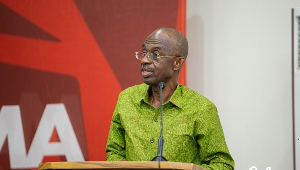Air transport has dramatically increased in Ghana since the 1990s when Ghana embarked on its structural adjustment programs under Presidents Rawlings and Kuffuor. The stellar economic performance under Rawlings and Kuffuor became known as “Ghana’s economic miracle”. However in the past couple of years the economy has hit some road bumps.
Before his demise, late President Mills, a former student of Kwame Nkrumah Ideological Institute, a staunch Nkrumaist and ardent believer in the rule of law, promised on fulfilling the Convention Peoples Party 7 year Development Plan, also known as Vision 2020. Mills embarked on revisiting those projects that were abandoned by the military National Liberation Council junta.
Under the original 7 year plan, Dr Kwame Nkrumah correctly envisage that Ghana would need 3 International Airports at Tamale, Kumasi and Accra and regional airports in rest of the regions by the end of the 20th century. In addition, there will be a public university in every region and a new technical/vocational university, to be called Ghana Institute of Technology (made up of the 10 regional polytechnics, various teacher training and Nursing Colleges).
To his credit, President Kuffuor did complete some of the projects in the 7 year Plan.
A boom in Ghana’s aviation industry at the turn of the 20th century, as Dr Kwame Nkrumah rightly predicated, has left Ghana’s only international airport, Accra International Airport, located in the centre of Accra, stretched to breaking point.
The design for the new international airport, to be named after the founder and father of Ghana, Osagefo Dr Kwame Nkrumah,( KWAME NKRUMAH INTERNATIONAL AIRPORT) to be located at Prampram, near Accra, will become West Africa’s biggest and busiest aviation hub, envisage to handle annual passenger throughput of 20 to 30 million.
According to its Chinese designers, Kwame Nkrumah International Airport, when completed, can handle 20 million passengers a year, more than Murtala Mohammed International Airport, Lagos, and almost as much as Oliver Tambo International Airport, Johannesburg, South Africa.
According to analysts, Kwame Nkrumah International Airport will overtake Murtala Mohammed and Oliver Tambo International airports within 5 years as the busiest aviation hub in sub Sahara Africa.
Prampram, which is an hour’s drive from Accra, will have a metro rail link connection to the city centre, and a planned high-speed rail road from Accra Rail terminal to the north of the country and will connect with the other two new international airports, Kumasi International Airport in Kumasi and Tamale International Airport in Tamale. Like other major airports in the world, the 3 international airports, (under President John Mahama’s Better Ghana Agenda), will have state of the act facilities.
According to people close to the Ghana Airports Company Limited,( owners of the three airports), and the office of the Mayors of Tamale and Kumasi, both International Airports will allow visa-free stopover to boast tourism. According to major tour operators in Europe and North America, Kumasi and Tamale, with their rich cultural history, would be actively promoted.
Since the late 1990s, Ghana has been developing its transport infrastructure as the country joins the middle income economies. Over the past two decades, Ghana’s growth rate has average 6% per annum, fastest than most developed economies. Tamale and Kumasi are among the fastest growing cities in Africa. The phenomenal growth rate of both cities is nearly 6% each, and already investors are focusing their attention on housing, roads, water and renewable energy, thus boosting the two cities economic growth. Both Kumasi and Tamale boost first class universities, Teaching Hospitals and excellent Medical schools and educated young population. Kumasi and Tamale would have a population increase of over 40% by 2025, and with their current growth rates, an impressive average of 6% growth during the last decade, they are the driving force of Ghana’s prosperity under President John Mahama’s Better Ghana Agenda.
As part of Ghana’s Vision 2020 project/7 Year Development Plan, both cities have benefited from expansion of physical and regulatory infrastructure. As part of the modernisation program under the 7 year Development Plan, Tamale would boost the largest inland port in Africa, and the new Tamale International Airport being at the heart of West Africa, the city would consolidate its status as the bread basket of Ghana.
The government of Ghana has embarked on a large scale project to boost non-oil growth – agricultural productivity and competitiveness and measures to improve the business environment in general.
The economic boom of the two cities is not coming from natural resources, but rather from retail commences, transportation, ICT and light manufacturing. Economists, including this writer, estimates that consumer spending in Tamale and Kumasi would increase from $250 million in 2012-2013 to over $50 billion by 2030.
Ghana’s oil sector is expected to boost growth in 2015 with increase in production; however, Ghana does not have impressive social indicators. Unlike other oil producing countries on the continent, Ghana’s growth is not dependent on oil revenues but on cocoa, gold and tourism. Ghana has also seen a large inflow of remittances from its nationals abroad, an indicator that the government of Ghana does not acknowledge.
Despite the current economic challenges, Ghana has always been seen as one of the most promising economies on the continent. The technology boom has created many entrepreneurs in the country, majority are women. Ghana’s economic success under Presidents Rawlings, Kuffuor, Atta Mills and John Mahama has translated into a large sizeable middle class whose disposable income is over $10 billion per annum. Despite its small population (25 million as at last census), Ghana has been a big player for years on the continent, both economic and political.
Although Ghana’s economic prospects have dimmed as results of huge public sector wage bill and financial irregularities, unguarded spending on bloated size of government and corruption sparked by revenues from the oil sector. However a projected growth rate of 5 to 6% for the fiscal year 2015 and 2016 still look impressive.
The depreciation of the local currency, the Cedi, has push the rate of inflation up plus the drop has made imports more expensive, which has led to widespread agitation about the rising cost of living.
As acknowledged by many economists, doing well economically is not enough if large section of your young population is unemployed and underemployed. In other words, economic success “miracle” without tangible strategies to reduce youth unemployment cannot sustain that economic prosperity.
It is now acknowledged by all that the non-oil sector of the economy is not performing well, especially food production is declining, with the government having to rely on food imports to feed its population, which is surging out of control and eating into Ghana’s foreign reserves. Ghanaians are abandoning manufactured made in Ghana goods for cheap “Foreign – mainly Chinese-“produce, thus weakening the local manufacturing sector. Like many countries on the continent, Ghana imports everything from toilet tissue to paper plates.
Ghana can reverse its downward trend if the government reduce the public sector wage bill drastically, impose high tariffs on imported goods and expand its tax collection program and cut wasteful practices in every sector of the economy. The government must encourage private sector job creation through Public and Private Partnership and reduce government subsidies on utilities and fuel.
Peter N. Jeffrey
Opinions of Friday, 2 January 2015
Columnist: Jeffrey, Peter Nee


















